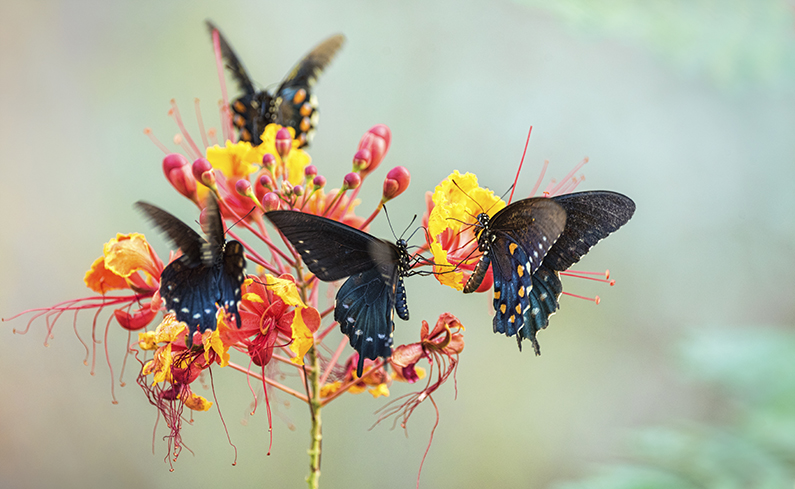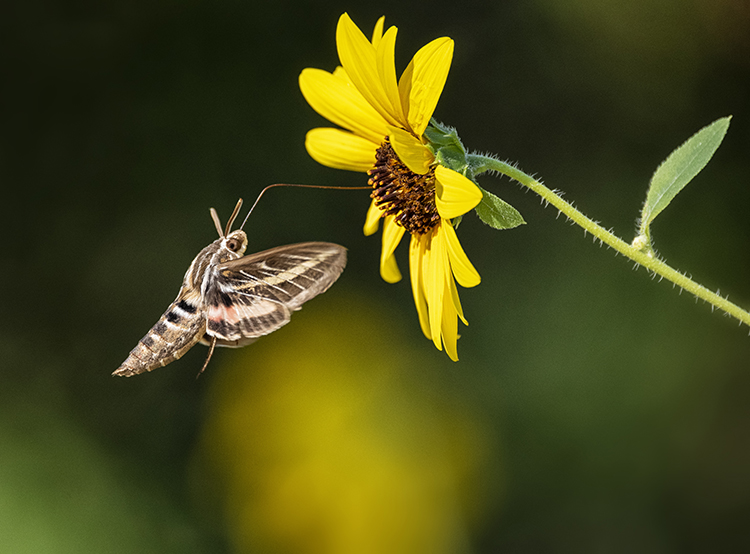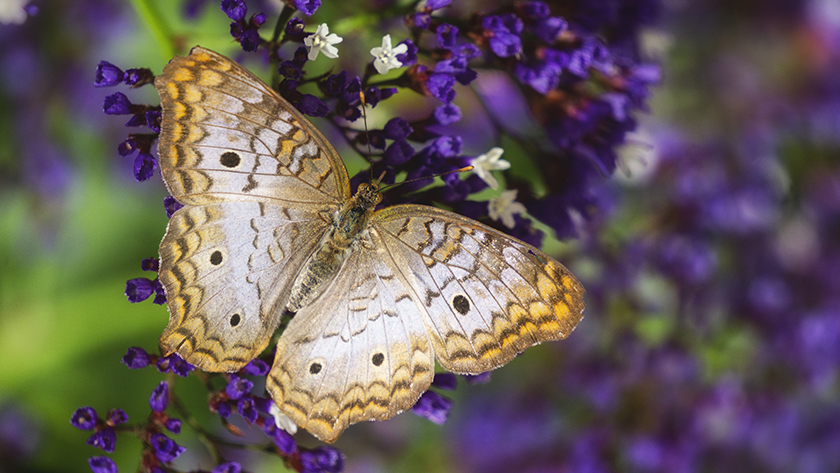Butterflies in Bloom

Writer Joseph J. Airdo
Photography by Saija Lehtonen
[dropcap]S[/dropcap]pring takes on an exceptionally special meaning to photographer Saija Lehtonen.
“I feel like spring is the beginning of the whole year,” Lehtonen says. “Spring — when the wildflowers begin to bloom — is when my photography really starts. From there, it slowly progresses to cactus flowers when the summer starts coming in. Then we move into monsoon storm season.”
Spring symbolizes the start of an entire 365-day cycle of life. For Lehtonen, that cycle is represented through her photography. For others, it may be represented through sports, bringing with it new seasons of games that begin with softball and baseball. For others still, it may be represented through fashion, marking the arrival of new looks and trends that start with shorts, shirts and sandals.
As Lehtonen’s photography alludes to, spring symbolizes something even more significant in nature. The days grow longer, the trees get greener and the wildflowers begin to bloom, prompting the arrival of some of the most beautiful and colorful creatures on our planet — butterflies.



There are more than 250 species of butterflies in the Sonoran Desert. Because Arizona’s topography is so diverse, our state has a uniquely large number of different microclimates, rainfall patterns and plant distributions. As a result, we have an especially rich population of these majestic life forms.
Our fields and our skies are filled with every color of the rainbow — as well as a vast number of color combinations — because of butterflies. Of course, their contribution to our state is more than just aesthetic. They are, after all, one of our environment’s key pollinators. But that, too, ends up benefitting us through a bounty of beautiful wildflowers.
It is almost as though butterflies are miniature angels, enriching our world with a colorful grace and reminding us to live our lives in a way that does the same for those around us. We hope that Lehtonen’s images of these heavenly creatures featured in this month’s photo essay inspire you to look ahead at your next 365-day cycle — whatever it may be — and consider how it, too, adds color to our community.
About the Photographer
Having grown up in Helsinki, Finland, Saija Lehtonen first discovered her love for photography at 12 years old.
“Somebody gave me a coffee table book by Ansel Adams and I loved his work,” says Lehtonen of the landscape photographer and environmentalist known for his black-and-white images of the American West. “His work was just incredible. I remember telling my mom, ‘I really want to do this.’ So she got me a camera.”
That first camera was nothing fancy — just an inexpensive Kodak 35mm film camera. But the moment that she snapped her first photo, Lehtonen had fallen in love with the art form.
“I was always camera-in-hand everywhere I went,” says Lehtonen, noting that she was initially drawn to black-and-white photography, much like that of Adams. “When I got to high school, I started taking photography classes and learned how to develop film.”
However, as with many things, life got in the way and Lehtonen eventually drifted from the art form. She pursued a career in property management and advertising. In 2003, she picked up a digital camera and a wave of that earlier enthusiasm washed over her.



“I had not done photography in years,” Lehtonen explains. “In 2010, just for fun, I entered one of my pictures that a lot of my friends really liked into the America’s Next Master Photographer contest. I ended up winning and I found myself falling in love with photography all over again.”
Shortly after that, Lehtonen decided to make photography her full-time job, fulfilling the dreams of her 12-year-old self. Her subjects range from nature and wildlife to storms and landscapes as she hikes and occasionally camps in places across Arizona that are off the beaten path.
“You will often find me chasing sunrises and sunsets, just hunting for that perfect light,” says Lehtonen, who now calls Chandler her home.

